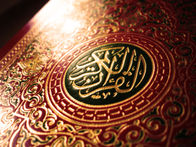Hamza Andreas Tzortzis
http://www.hamzatzortzis.com

1) In a number of manuscripts the letter alif is written in an incorrect way
2) There are some differences in the numbering of verses in some surah’s (chapters of the Qur’an)
3) In 2 or 3 sheets he has found the surahs are written in an alternative order to that of the standard Quran
Before I start to discuss his claims, it must be noted that Dr. Puin himself mentions that these discrepancies are minor and they would not probably lead to any sudden and significant advances in the filed of Qur’anic studies.
The Qur’an is preserved historical document. There are two intellectual traditions regarding the preservation of the Qur’an, an oral tradition and a textual tradition. I will not detail the textual tradition here, but it will suffice to mention that we have many manuscripts of the Qur’an dated back to the first century after the hijra. These can be compared to the current copies we have today, and it can be seen that nothing has been altered.
The oral tradition of the Qur’an is a phenomenon unique to Islam. There is an estimate of over 20 Million hufadh (people who have memorised the Qur’an) in the world, and millions of these hufadh have learnt the Qur’an via a direct transmission starting from the Prophet (s) himself. The implications of this are astonishing. If millions of people who have memorised the Qur’an can trace their oral memorisation of the Qur’an down the centuries of teachers and scholars all the way back to the Prophet himself, who could doubt the authenticity of this oral tradition? Especially if these millions of hufadh live in different places in the world and have learnt the Qur’an via different teachers and scholars. The amount of varying oral transmissions and the amount of people who have learnt the Qur’an – in addition to there being no discrepancy in what they have memorised – is not a historical accident. The conclusion can only be that the Qur’an memorised today is the one that was taught 1400 years ago. There is no other rational explanation for this unique oral phenomenon.
Arguments that attempt to undermine the oral tradition can only be described as conspiratorial and absurd. Unless someone argues that all of these hufadh throughout the ages – at different points in time and different places in the world – somehow came together to ensure that they all memorised and recited the exact same Qur’an, then there is no alternative explanation. To pose such an argument is irrational.
Refuting the claims
1) The incorrect writing of the alif at some places does not in any way effect the integrity of the text as a whole. This is due to the fact that the oral recurrent reporting of the Quranic text has always been used as the standard reference. The skeletal form or the representation of the text in the Arabic language has always been used as a secondary reference. Hence when a hafidh (someone who has memorised the Quran) refers to a copy of the Qur’an with a small mistake such as an incorrect alif, he will easily understand the word and make the correction. Take for example the word ‘understanding’ in English. If read the following way: “understndng” anyone could comprehend the meaning, especially if the incorrectly spelt word was placed in a sentence.
2) Differences in the numbering of verses have never been a cause for concern with regards to the textual integrity of the Qur’anic text. Classical Muslim scholarship has debated many opinions on the where a verse starts and where one should finish, hence difference in numbering. This difference in numbering doesn’t affect the text as a whole. Even Flugel, a famous Orientalist numbered the Qur’an differently from the standard text. It must be noted that Dr Puin doesn’t mention changes to the text, only in the numbering of the verses, which has no impact on the text as a whole.
3) It is well known that for academic and other purposes the Qur’an has been published from time to time with surahs arranged according to the order of their revelation. Thus for instance, A. Rodwell published a English translation of the Qur’an in 1861 rearranging the surahs according to their order of publication. And early in the twentieth century a Muslim of Bengal, Mirza Abul Fazl, issued a new translation arranging the surahs according to the order of their revelation. Similarly Richard Bell made another translation in the early thirties with what he called a “critical rearrangement of the surahs.” Moreover, it has been reported that the companions of the Prophet Muhammed used to keep copies whose arrangement of surahs was different though there were no differences in the verse arrangement.
The existence of a Qur’an with a different arrangement of the surahs or with what is called “revisions” – even though they are irrelevant and minor – is not evidence for a revised Qur’an. The oral tradition of the Qur’an is so well established that any minor textual “error” can be easily rectified. The arrangement of the surahs and verses do not effect the text but are arbitrary methods to counting and splitting the text up; which has no bearing on the textual integrity of the Qur’an.

 RSS Feed
RSS Feed
